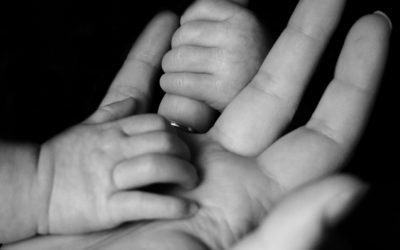Reflections on Working with Trauma
Developmental trauma has a significant impact on adult functioning. Survivors of trauma experience persistent distress in their relationship with self as well as with others. They find the quality of life dissatisfactory, relationships conflictual or empty and some are in a state of despair about ever finding joy and meaning in their lives. Even though pain cannot be done away with from one’s life, therapy can be a space where one can explore ways to make meaning of the incipient terror and help reduce the suffering that trauma brings.
This article is a personal reflection of how relational therapy can provide an experience of working through the trauma. These reflections have taken shape from the work I have been doing with some clients of mine who are all survivors of severe trauma in their childhood and continue to re-experience the trauma in their personal and professional lives. In addition, it’s also a self-reflection on my personal qualities and responses, which may trigger feelings of shame in the ‘other’. Recently an old trainee of mine who began her practice came to me for supervision and I asked her how she was feeling sharing her struggles with me. She said she felt relieved and afraid. I was curious about the response and requested her to say more about the relief and fear.
She responded, “Relief that finally, I have you as a supervisor which I always wished for and fear that since I haven’t been in supervision for three months, I know how important supervision is for you, you would judge me.” I was startled by the response and responded to her that her fear was valid because I do make my views on the importance of supervision and therapy clear to my trainees.
As I reflected on this and other instances in my work with my clients’, my understanding of the ‘intersubjective’ perspective deepened. Intersubjective psychoanalysis proposes that all interactions must be understood within the context; interactions between the child/parent, client/therapist cannot be seen as separate from each other, but as mutually influencing each other (Atwood & Stolorow, 1984). Ongoing intersubjective environments can bring up affect states, thinking and actions from early childhood experiences. Translated into Gestalt perspectives, the relational field can bring up unresolved feelings, cognitions, actions and somatic experiences from childhood. It’s what Lynne Jacobs (2016) calls, ‘enduring relational themes.’
The intersubjective theorists’ (Atwood & Stolorow, 1997; Stolorow, 2002; Stolorow, 2012) argue that children grow up to be, ‘independent subjects’ when they are recognized by their caregivers as ‘beings’ with their own minds, feelings and will. When the caregiver is tuned into the infant’s needs then they respond sensitively to the infant’s affective expressions with an observable display of their own affective responses. For e.g. when a baby is crying inconsolably with some pain, the caregiver would soothe the baby by holding and her facial expression would show concern through a puckering of the mouth while uttering words of comfort. And this helps the baby learn to regulate his or her own emotions, and develop a stable sense of self because there is a ‘development of intersubjectivity’. On the other hand, the caregiver may ignore the crying, get agitated and anxious at the child’s uncontrollable bouts of crying. If the caregiver’s affective response is incongruent or negative in its uncontrolled state then it adds to the trauma of the child. This makes it difficult for the child to assimilate his/her cognitive, emotional and sensory experiences into a meaningful whole (Stolorow, 2012).
Lapses on the part of parents/caregivers are likely and unavoidable. There would be occasions when a caregiver is not able to be attuned to the infant’s distress or expressed effect. Having been a mother thrice and continuing to be one I have observed my own lapses with regret, guilt and occasions of shame. There is no perfect parenting and no perfect mothering, however as Winnicott (1973) says, what one can try to achieve is ‘good enough mothering’. Acute distress and persistent impairment in adulthood happen when there has been a pervasive pattern of misattunement to the child’s experiences and related feeling states. ‘From recurring experiences of mal-attunement, the child acquires the unconscious conviction that unmet developmental yearnings and reactive painful feeling states are manifestations of an inherent inner badness’ (Stolorow, 2013). And this is often accompanied by a deep sense of shame that gets easily triggered in relationships and situations. I remember as an adolescent and adult my own experiences of shame and the only language I could describe it in was a line from Shakespeare’s Hamlet,
O that this too too sullied flesh would melt, thaw and resolve itself into dew
I think this intimate relationship with my shame helped shape my relational approach and sensitized me to work with clients for whom shame is a companion.
In relational therapy, the focus is on the phenomenological experiences of the client and therapist in the here and now. The therapeutic relationship is the primary unit that reflects the clients struggle relationally and often as a therapist when we look into ourselves it also reflects our own struggles. It’s a kind of profession where the intimacy of the relationship comes with relational patterns getting activated and acted out. Both the client’s and therapist’s values, belief’s, ways of thinking, feeling and acting come to the foreground in the least expected ways.
While working with clients who have had severe forms of repeated trauma in their childhood, I have distressingly witnessed how their developmental needs have gone unmet. When I see some of these clients’ repeating the same pattern with themselves or in their relationships, which are damaging, it’s difficult for me to respond ‘objectively or neutrally’. At the cost of triggering the shame experience in my clients, and risking therapeutic rupture, I set clear boundaries of accountability.
The client’s ongoing struggle is to accept themselves and take responsibility for their damaging actions, to hold the two experiences within the same space and same body. My struggle is walking a tightrope between expressing my care and affection for them as ‘a being’ while ‘setting limits’ for their actions which are harmful. The therapeutic response using a relational approach would be to respond sensitively to the ‘affect state’ of the client without ignoring any aspect of that experience. At the same time limit setting and understanding the consequences of choices one makes is an integral part of working relationally. Although this leads to strain on the alliance, it also opens up opportunities to engage in dialogue which is an integral part of relational therapy. Clients are able to share their wishes and desires about me, that I approve of them, fear that if their vulnerabilities and ‘badness’ are brought to light they will be ‘unliked’ and abandoned by me. That is the deepest fear and ongoing relational experiences with the therapist can open up opportunities to verbalize these fears.
One of my clients told me how she would like telephonic sessions for some time because she couldn’t bear to see my face after a few painfully challenging sessions for her and me. Yet the yearning towards growth is fairly innate in all human beings, which brings them back to the intersubjective field they crave for and are afraid of at the same time, a nascent space between what Lynne Jacobs calls ‘dread and hope’ (2016). I use the words ‘nascent space between’ quite mindfully because of carrying ‘dread and hope’ is an existential human experience. Disowning either one leaves us with a pervasive sense of pain. It’s important to be able to develop a safe space together, share honestly one’s own concerns, fears and frustrations in a thoughtful manner and acknowledge vulnerabilities. Not a perfect human being, not a perfect client and not a perfect therapist, but ‘good enough’.

Gestaltan Lives
Four Horsemen of Apocalypse and Antidote for Couples
Improving our relationship requires an ability to comprehend the subjective experience of ourselves
Dependency and Relationality
A question that often crops up in my training sessions, especially so when I teach the Post Graduate Students
Complexity of a Therapist’s Grief
Our profession is an unusual one or so I believe, we are bound by ethical guidelines for our



